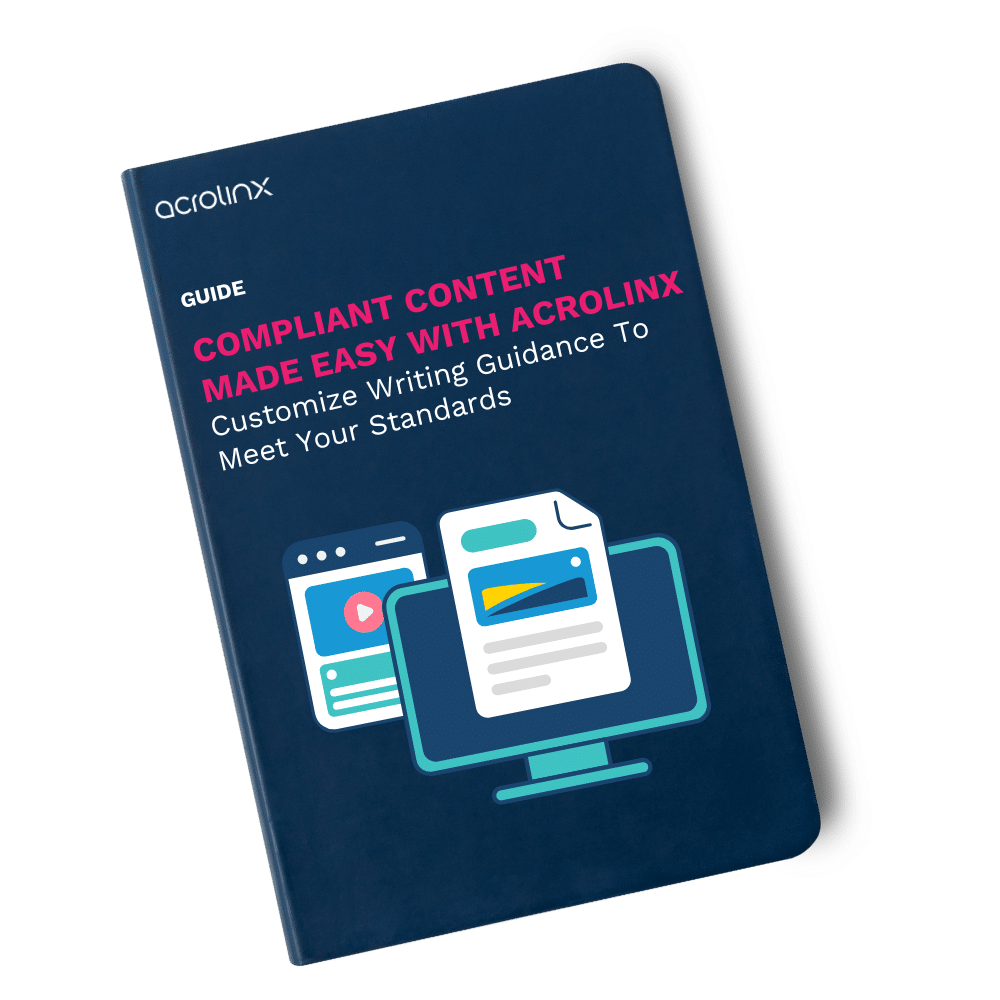
The Financial Conduct Authority (FCA) has just announced new regulatory requirements under the New Consumer Duty to enhance consumer protection across the UK’s financial sector. This regulation shifts the focus of financial firms from prioritizing profits to delivering four key customer outcomes:
- Fair pricing
- Clear communications
- Audience-focused products
- Superior customer service
These regulations, effective from July 2023, require firms to act promptly to avoid penalties. This means that financial firms like yours need to be taking action now! That’s why this post explores how to meet the first three customer outcomes with actionable steps to align your content strategy to the New Consumer Duty.
Why content matters for the New Consumer Duty
The FCA emphasizes clear, accessible, and audience-relevant content. Financial firms must make sure that consumers:
- Receive timely, accurate, and transparent information.
- Understand the risks and benefits of financial products.
- Have easy access to support services.
To help you meet these requirements, here are three essential actions to prepare your content and maintain compliance.
1. Understand your audience with content metrics
Understanding your specific audience is the foundation of compliance. Different consumers require varying levels of clarity based on their financial literacy and product familiarity. This will determine how your content needs to change to meet the New Consumer Duty requirements. For example:
Traditional savings products
Less financially savvy audiences may need risk disclosures in simple, jargon-free language. Clear and concise explanations help them make informed decisions.
Consumer audiences interested in traditional savings vehicles may not be savvy financial investors. The promise of impressive gains may lure them into a risky investment product. Even if the performance may be true, if the risks associated with this investment are written in a confusing and convoluted manner, many people may enter this investment and lose a significant amount of money. If these products properly disclose the risks in a clear and concise manner, that’s easy for audiences to understand, they’d be able to make the right decision based on their financial needs.
Advanced investment products
Experienced investors may prefer detailed, data-rich insights but still require transparent communication to build trust. Investment audiences who are more financially literate might understand the risks associated with advanced investment products and won’t require the level of clarity a traditional consumer likely needs. By shaping content to this audience, you’re more likely to align with their expectations and avoid less savvy investors accidentally stumbling into risky products.
Using content metrics like the Flesch Reading Scale, A/B testing, and time-on-page analysis helps gauge the effectiveness of your content. Gathering user feedback through surveys or satisfaction scores provides additional insights into whether your content meets the expectations of its intended audience. As consumers give feedback on their satisfaction with that content, you can then understand how you must craft the messaging in your content to align with that audience.
2. Gap analysis for the New Consumer Duty
A gap analysis identifies where your content fails to meet the clarity and alignment requirements of the New Consumer Duty. Given the volume of content, manual review is impractical, ranging from marketing materials to regulatory disclosures.
Implementing AI for risk management can streamline this process by:
- Identifying inconsistencies and readability issues.
- Making sure content aligns with audience needs and regulatory requirements, and is easy to read and understand by that intended audience.
- Reducing human errors during review.
An enterprise content governance system can analyze thousands of pages efficiently, flagging areas for improvement. This ensures that all consumer touchpoints — disclaimers or product descriptions — are accurate and compliant.
That means you’ll need to review all of your existing and new content to be sure it’s aligned with the audience it’s intended for and that it’s clear. This isn’t something you can rely on people to execute. It’s estimated that the average editor reviews up to 200 pages per day. That means that one person can review 10,000 pages per year, with only two weeks of holiday pay.
Many financial firms have hundreds of thousands of content pages across marketing, disclaimer, regulatory, and disclosure documentation that’s REQUIRED to be reviewed. Even if you were to hire a team assigned to reviewing content, you’re still increasing your risk because of the common errors or mistakes that human editors can introduce. To analyze content gaps and clarity issues, using enterprise content governance is the most effective approach.
3. Update and maintain content quality assurance
Once gaps are identified, the next step is to update your existing content to ensure compliance. Establishing a systematic content quality assurance process is crucial. This involves:
- Prioritizing updates to new products, which must meet immediate compliance.
- Scheduling regular reviews for existing products to maintain alignment by the July 2024 deadline.
- Creating workflows for editors and writers to update content collaboratively.
By leveraging AI tools, you can automate these updates while maintaining consistent quality and reducing the risk of oversight.
The ultimate goal is to create and update that existing content to meet the clarity needs of your intended audience in order to satisfy the FCA that you’re truly meeting the New Consumer Duty. A process must be established to not only identify the updates required to your new and existing content, but also to implement changes into that content. Editors will need to edit and highlight changes that content writers will need to update in the existing content.
New products take priority here as existing products aren’t required to meet the new regulations until July of 2024. New newly developed products must meet established criteria when released. Content must continue to meet this criteria should any shifts happen in the clarity expectations of your intended audience. The FCA has committed to not only review and approve products as they’re submitted but to also check in on the continuing performance of those products. This is to ensure they continue to meet the needs of the intended audience. This means that content must continually be reviewed to confirm it continues to meet the New Consumer Duty regulation.
4. BONUS: Demonstrate compliance with measurable proof
The FCA has made it clear that it’s the responsibility of the firm to make sure that they’re clearly communicating important information, product specifications, risk assessments and other information for consumers to make informed decisions. It’s also the responsibility of the firm to prove that they continue to meet the new requirements.
As of July 31, 2023, the Consumer Duty has come into effect for all new and existing products and services that remain on sale or open for renewal. Firms are now required to ensure their offerings are fit for purpose, provide fair value, and are communicated in a manner that consumers can understand.
To demonstrate compliance with the New Consumer Duty, firms should implement measurable proof strategies:
- Consumer Feedback: Gather data through on-page surveys and satisfaction questionnaires to assess consumer understanding and satisfaction.
- Engagement Metrics: Monitor how specific audiences interact with products to identify areas for improvement and ensure offerings meet consumer needs.
- Benchmarking Content: Establish clear metrics and audit trails to show continuous improvement over time, thereby fostering trust with regulators and consumers.
By adopting these measures, firms comply with regulatory requirements and enhance consumer trust and satisfaction, aligning with the FCA’s goal of delivering good outcomes for retail customers.
Whether you’re marketing new products, improving clarity, identifying new markets, or improving your customer support experience, content is the pivotal factor in enabling consumers and employees to give the best possible experience.
Stay ahead: Ensure compliance and build consumer trust today
Meeting the New Consumer Duty requires a proactive approach to content governance. By understanding your audience, leveraging AI for risk management, and implementing robust content quality assurance processes, you can align your operations with regulatory standards while enhancing customer trust.
With the FCA conducting ongoing evaluations, prioritizing content clarity and compliance will be continuous. Adopt the right tools and strategies today to ensure you’re ready for current and future requirements. Request a demo to learn how Acrolinx can help your financial firm.
Are you ready to create more content faster?
Schedule a demo to see how content governance and AI guardrails will drastically improve content quality, compliance, and efficiency.

Christopher Carroll
is a Product Marketing Director at Acrolinx. With over 15 years of B2B enterprise marketing experience, he spends his time helping product and sales leaders build compelling stories for their audiences. He is an avid video content creator and visual storyteller.





